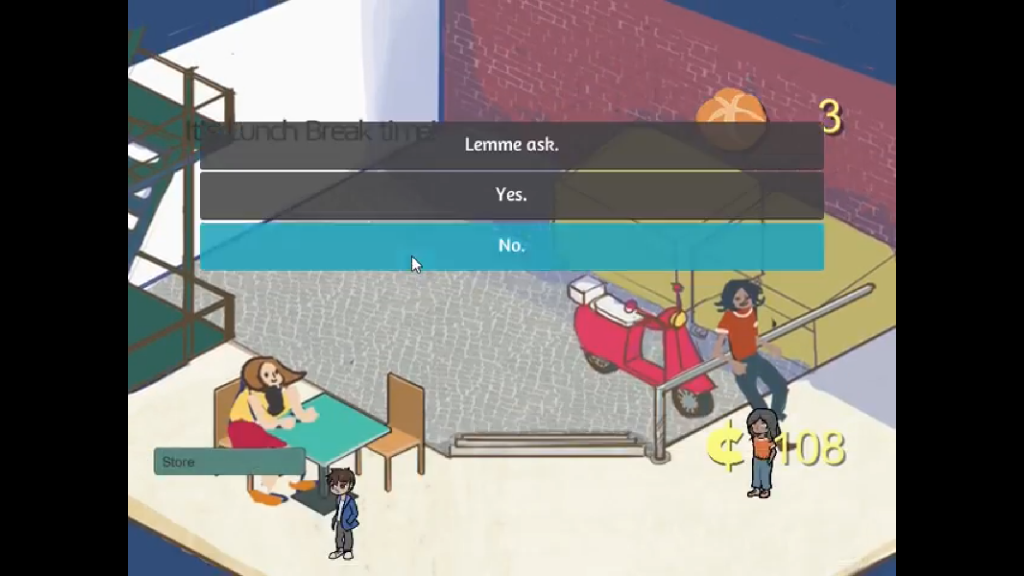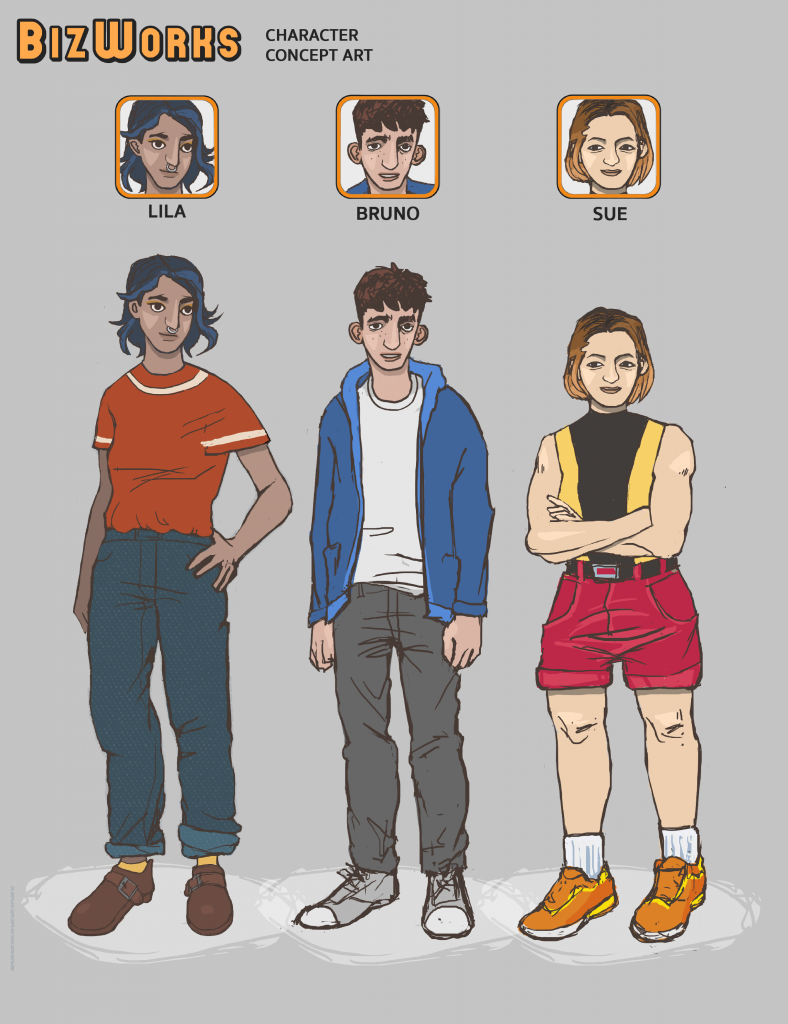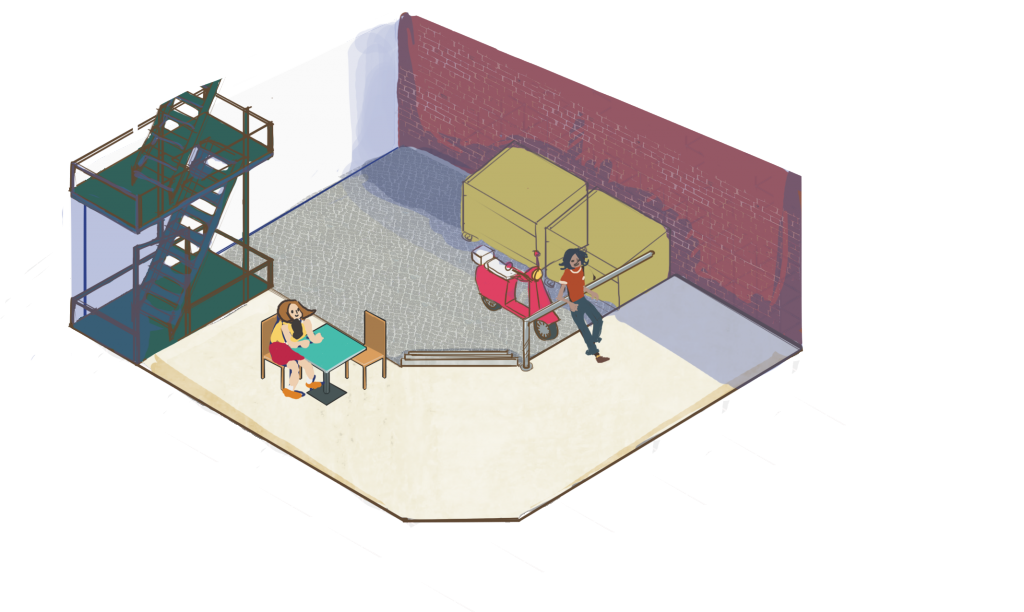 Introduction
Introduction
With the team’s spring break causing a slight lull in work, members mostly focused on polishing some of the assets in game and finishing the basics of the daily cycle. Programmers were able to get the dialogue system into the game, using placeholder dialogue while writers continue to write character arcs. Art also laid out new characters for the game and continued working on environmental assets. The goal for the next two weeks is to polish all of the in game assets and present a working prototype to the client, as well as get a preliminary version of the game up and running so that we can playtest with students on campus.
Programming
The skeleton of the daily cycle has been finished with programmer art and UI elements. For the purposes of playtesting and programming, each shift is thirty seconds in game time, which represents a week in the game. During the shift, depending on the tasks assigned to the employee, the bakery sells bread. There are a few mechanics built into the game regarding employee task delegation. For example, if there is no one assigned to run the cash register, there will be no product sold. Likewise, if there is no one assigned to make bread, stock will not be replenished. During the lunch shift, the player can tap on an employee, which triggers a dialogue. This dialogue can either be part of the employee’s character arc or just fluff interaction. Employee interaction is implemented using the Fungus plugin for Unity. Placeholder dialogue is currently being used but can be easily replaced with real dialogue once that is finished. The daily cycle will be polished in the upcoming week. Working with artists, programmers designed a weekly summary panel. The purpose of this weekly panel is to give a place for the player to pay loans, taxes, and insurance, as well as show the player how they have earned money and lost in expenses. The mechanics have been planned out and are in the process of being implemented.

An example of how dialogue choices will be given to the player
Art
Over the break, the artists worked to finalize the designs of the characters and further prototype the environment. For example, we wanted to add a back area to the store for the lunch break, in order to reinforce the idea that the lunch shift is different from the morning and afternoon shifts. The styles for the first 3 employees — Lila, Bruno and Sue — have been updated and are now more detailed to generate more player investment. When making these characters, we kept in mind how much diversity we could bring out in them and how we could get the students to identify with the characters. Therefore, we made the first three characters close to the target demographic in age and tried to give them relatable issues to work through, such as roommates, credit cards, and athletics. Visually, the characters are also diverse, as being able to make everyone feel included was a large goal of the artists. The artists also started planning a 4th employee and a financial advisor, which are at the stages of concept art.

Designs of the first three employees
The lunch and storefront areas have also also been outlined. As mentioned we wanted to add a back area to the store for the narrative portion of the game. The lunch area, which is essentially a back alley, connects to the back door of the main game hub, allowing for a smooth pan during gameplay, which programmers should be implementing in the next week. The lunch area’s purpose is primarily visual and is intended to evoke relaxation, as that is the designated time for when you can interact with the NPC employees in a more thorough manner. In order to leave this back section, the player has to interact with the employees. Additionally, in the back of the lunch area, there is a bike that will move in and out for employees who go out on deliveries. Artists are going to spend the next week polishing this area as well.

Initial sketch of the lunch area
Moving Forward
Keeping in mind the next checkpoint is in the next two weeks, the team is moving into making a fully playable prototype. Artists will move into finalizing design for the environment, as well as starting the process of animating the three to four employees. Programmers will start to create the weekly panel and focus on getting all the main mechanics in and working. In terms of writing characters, the goal is to have at least one fully written character for the prototype, although we’d like to try and have more than one for it done. Although we were supposed to have started implementing a minigame by this point, the team is focusing on getting the main mechanics that teach financial literacy in first, and then move to the minigame if we have time.